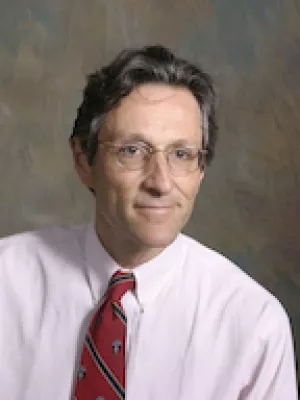Biography
Timothy A. M. Chuter, M.D. studied medicine at the University of Nottingham, England. He then moved to New York and worked as an assistant professor of anatomy at Columbia University. His first-ever publication was the head, neck, and upper extremity chapters of an anatomy textbook. He was lucky enough to be in the right place at the right time when a computer glitch left the Columbia-Presbyterian general surgery program one intern short, thus starting his journey.
In 1990, upon completing general surgery residency, Dr. Chuter moved to Rochester, New York for fellowship training in critical care and vascular surgery. His planned career as a general/vascular surgeon in a rural New England town took a different direction when he started to explore a few original ideas concerning the potential role of endovascular intervention as an alternative to maximally invasive surgery. These experiments were initially funded by Dr. Chuter's nighttime employment in local emergency rooms. Promising results attracted financial support and engineering help from Cook, Inc., a manufacturer of catheters, wires, and stents. The excitement generated by these early successes was enough to precipitate Dr. Chuter into a career focused on innovation, clinical application of new techniques, publication, and further innovation, all at a frenetic pace.
Dr. Chuter completed his vascular fellowship and went back to Columbia-Presbyterian as an assistant professor of surgery in 1993. The first clinical implantations of a bifurcated stent graft took place in late 1993 at selected centers in Australia and Europe. In 1995, Dr. Chuter left New York to work in Sweden as an associate professor of interventional radiology at Lund University. In 1996, Dr. Chuter was recruited to UCSF as the director of the newly formed endovascular program. The other founding faculty member was Linda M. Reilly, MD, FACS, renown for her numerous contributions in the field.
Education
| Institution | Degree | Dept or School | End Date |
|---|---|---|---|
| Nottingham University | Fellow - Surgical Research | School of Medicine | 1994 |
| Unviersity of Rochester | Fellow - Vascular Surgery | School of Medicine | 1993 |
| University of Rochester | Fellow - Critical Care | School of Medicine | 1991 |
| Columbia University | Surgery Residency | Department of Surgery | 1990 |
| Nottingham University | M.D. | School of Medicine | 1982 |
Board Certifications
- American Board of Surgery, 1991, Renewed 2001
- American Board of Surgery, Vascular Surgery, 1995, Renewed 2004
In the News
Publications
- Variation in the shape and length of the branches of a thoracoabdominal aortic stent graft: implications for the role of standard off-the-shelf components.| | PubMed
- Commentary on "Modified fenestrated stent grafts".| | PubMed
- Energy loss due to paravalvular leak with transcatheter aortic valve implantation.| | PubMed
- Valve-in-valve implantation using a novel supravalvular transcatheter aortic valve: proof of concept.| | PubMed
- Intermediate results of a United States multicenter trial of fenestrated endograft repair for juxtarenal abdominal aortic aneurysms.| | PubMed
- Endovascular repair of thoracoabdominal aneurysms: design options, device construct, patient selection and complications.| | PubMed
- Aortic valve-in-valve implantation: impact of transcatheter- bioprosthesis size mismatch.| | PubMed
- A standardized multi-branched thoracoabdominal stent-graft for endovascular aneurysm repair.| | PubMed
- Durability of endovascular infrarenal aneurysm repair: when does late failure occur and why?| | PubMed
- Systemic inflammation, coagulopathy, and acute renal insufficiency following endovascular thoracoabdominal aortic aneurysm repair.| | PubMed

